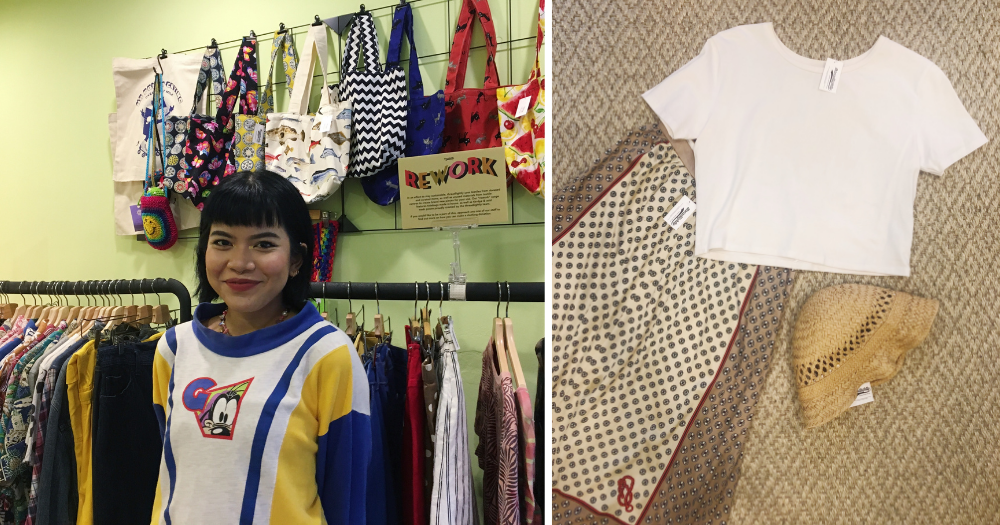Who says you have to spend a ton of money to look stylish? Not Rin Azhar, that's for sure.
"I think personal style depends on how you put items together," the 21-year-old explains to me as we stand in between racks of thrifted and vintage clothes at Threadlightly, Rin's shop.
It's a small but quaint shop, with light green walls adorned with paintings by local artists, four racks of clothing, a couple of shelves and boxes of accessories and books, and a small collection of tote bags hand-made by Rin's mother.
 Photo by Jane Zhang.
Photo by Jane Zhang.
Nestled between a sports therapy shop and a tailor at Queensway Shopping Centre, Threadlightly officially opened its doors in August this year.
It had been a side project of Rin's for several years, in the form of pop-up booths at Ngee Ann Polytechnic and SCAPE, where she sold clothing donated by friends and classmates.
She had started the initiative as a way to "give back" in two ways — first, to the environment, by encouraging sustainability through "circular fashion" — a system in which clothing is circulated and reused for as long as possible before being disposed of safely and responsibly when it can no longer be used — rather than fast fashion.
And second, to give back to the community, donating all of the proceeds from her pop-up business to local non-profit organisation AWARE.
However, Rin knew then that someday, she wanted to focus on scaling up Threadlightly into a more permanent business.
Her dream of doing so began to materialise earlier this year. After three months of searching, she settled on a space in Queensway Shopping Centre because of its relatively accessible location, size, and affordability.
She was able to afford the space, renovation, and furnishing costs by drawing on her own savings, together with a few thousand dollars as a form of support from her father, something she is very grateful for:
"I feel very privileged to be able to have a family that supports me in all my endeavours, regardless of how much of a risk it may be."
And in August 2020, Rin officially launched Threadlightly as the founder, owner, and sole employee.
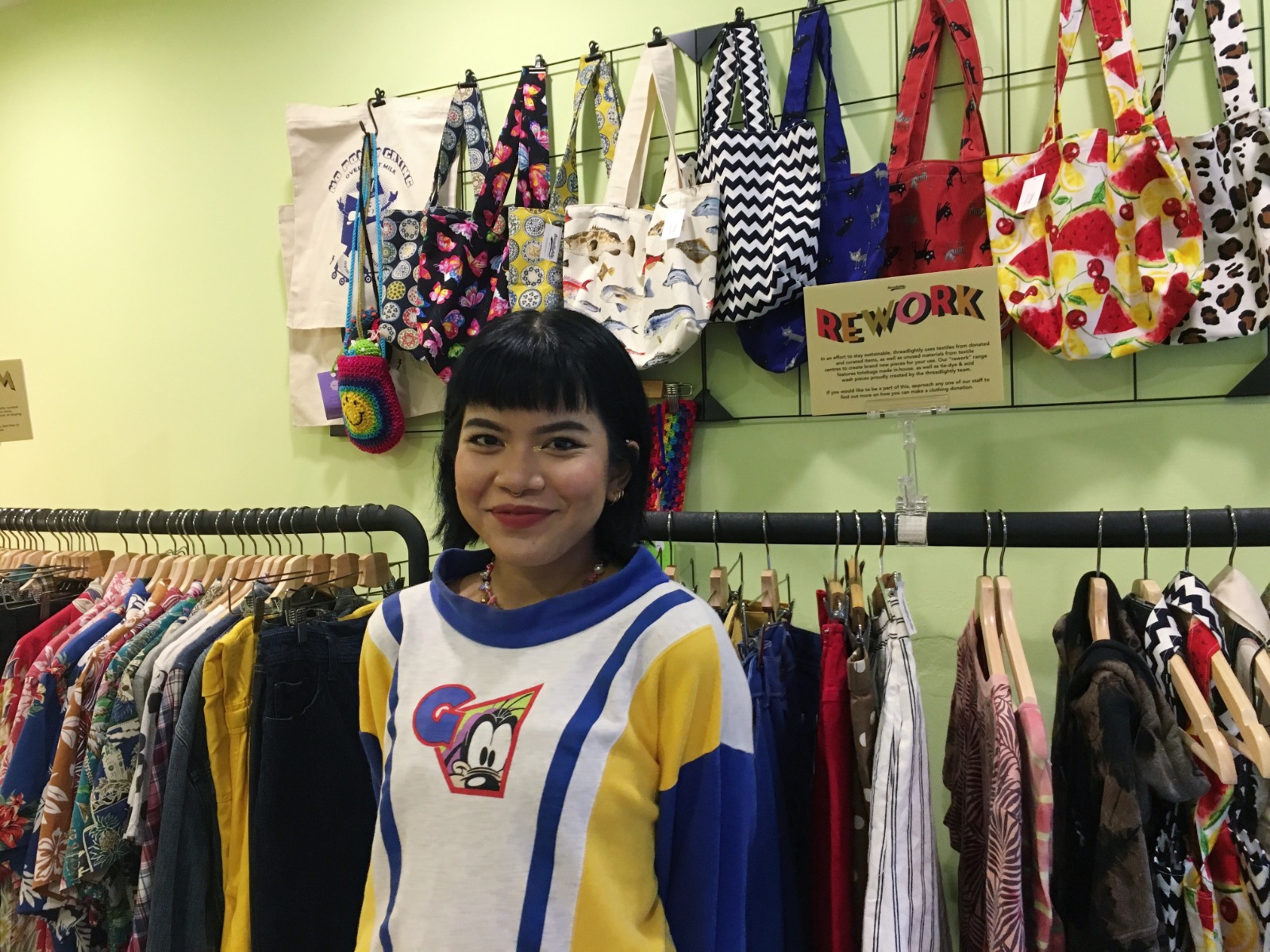 Photo by Jane Zhang.
Photo by Jane Zhang.
And in the less than six months that Threadlightly has been around, its Instagram and TikTok pages — where Rin does most of her marketing outreach — have already garnered more than 3,000 followers each.
Pre-loved clothes are neither dirty or unstylish
When you hear the words "thrifted clothing" or "thrift shop", what kinds of adjectives come to mind? Are "dirty", "low-class", or "unfashionable" among the words that pop up?
These are some of the misconceptions that people have about thrift store clothing.
Actually, Rin explains, everything in the store goes through a rigorous cleaning and sanitation process.
First, the shop doesn't accept donations of dirty clothes, or clothes with holes in them. Then, Rin diligently washes and hand-irons each of the pieces of clothing that are accepted.
Rin also carefully sanitises the store multiple times a day, as she shared in a TikTok video:
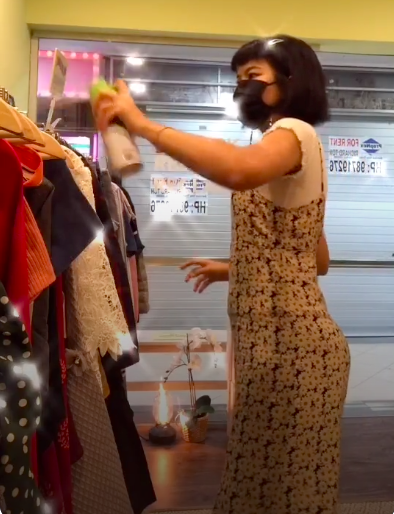 Screenshot via @threadlightly on TikTok.
Screenshot via @threadlightly on TikTok.
Used — or, "pre-loved", as most in the thrifting community call it — clothing shouldn't be solely associated with lower socioeconomic class, says Rin, adding that it should be a viable option to anybody who wants to shop in a more sustainable manner.
Some others may also think that it isn't possible to be stylish in "old" and "used" clothing.
Rocking a vintage purple and yellow Goofy sweater and zebra print pants, Rin disagrees, although she laughs and admits that there may be some items of clothing that are difficult to look good in.
"It really depends on the person, whether or not they have that eye for good items in the thrift store. Because you can really, really find a lot of good gems."
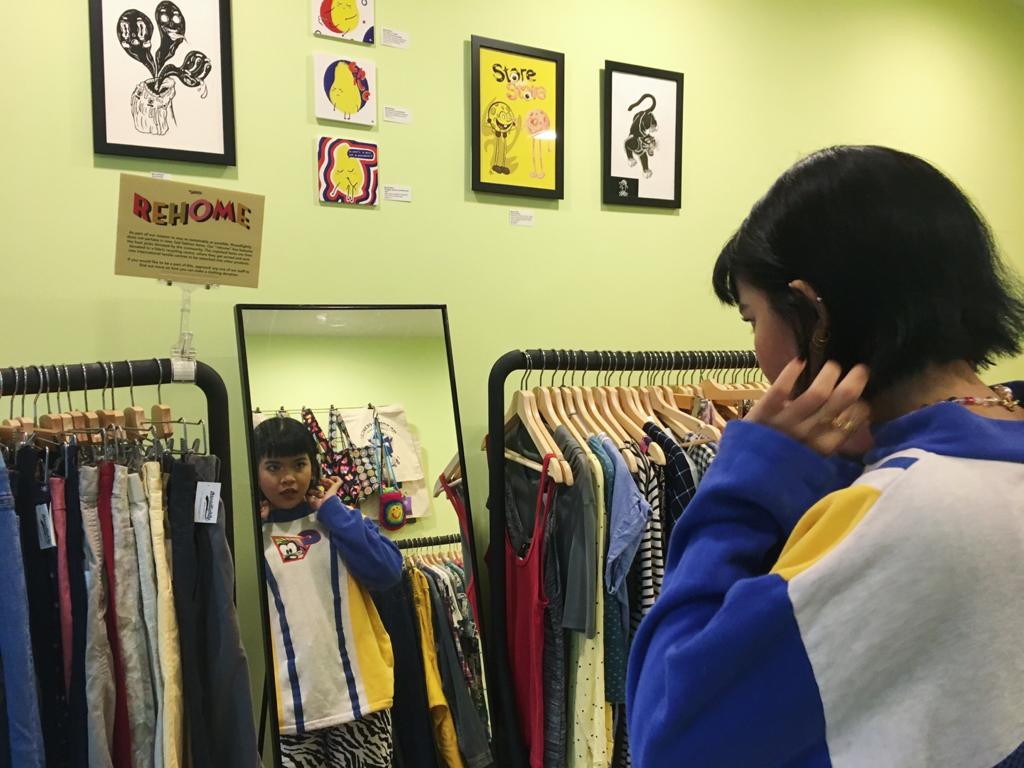 Photo by Jane Zhang.
Photo by Jane Zhang.
Styling with vintage pieces may not come easily to many. So Rin has a "lookbook" on Threadlightly's Instagram and website to help potential customers think about how they can style themselves with the pieces available at the store.
She also shares with me a few more ways that customers can style themselves with pieces from her shop:
 Photo courtesy of Rin Azhar.
Photo courtesy of Rin Azhar.
 Photo courtesy of Rin Azhar.
Photo courtesy of Rin Azhar.
 Photo courtesy of Rin Azhar.
Photo courtesy of Rin Azhar.
Three lines of clothing
Staying true to the theme of sustainability, Threadlightly has three different clothing lines: Rehome, Reclaim, and Rework.
Rehome, which makes up about half of the store, consists of donated clothing.
Clothes donated to Threadlightly which don't make it onto the shelves, or anything that doesn't sell after a month or two, are donated to international textile centres.
"So nothing in our store goes to waste," explains Rin.
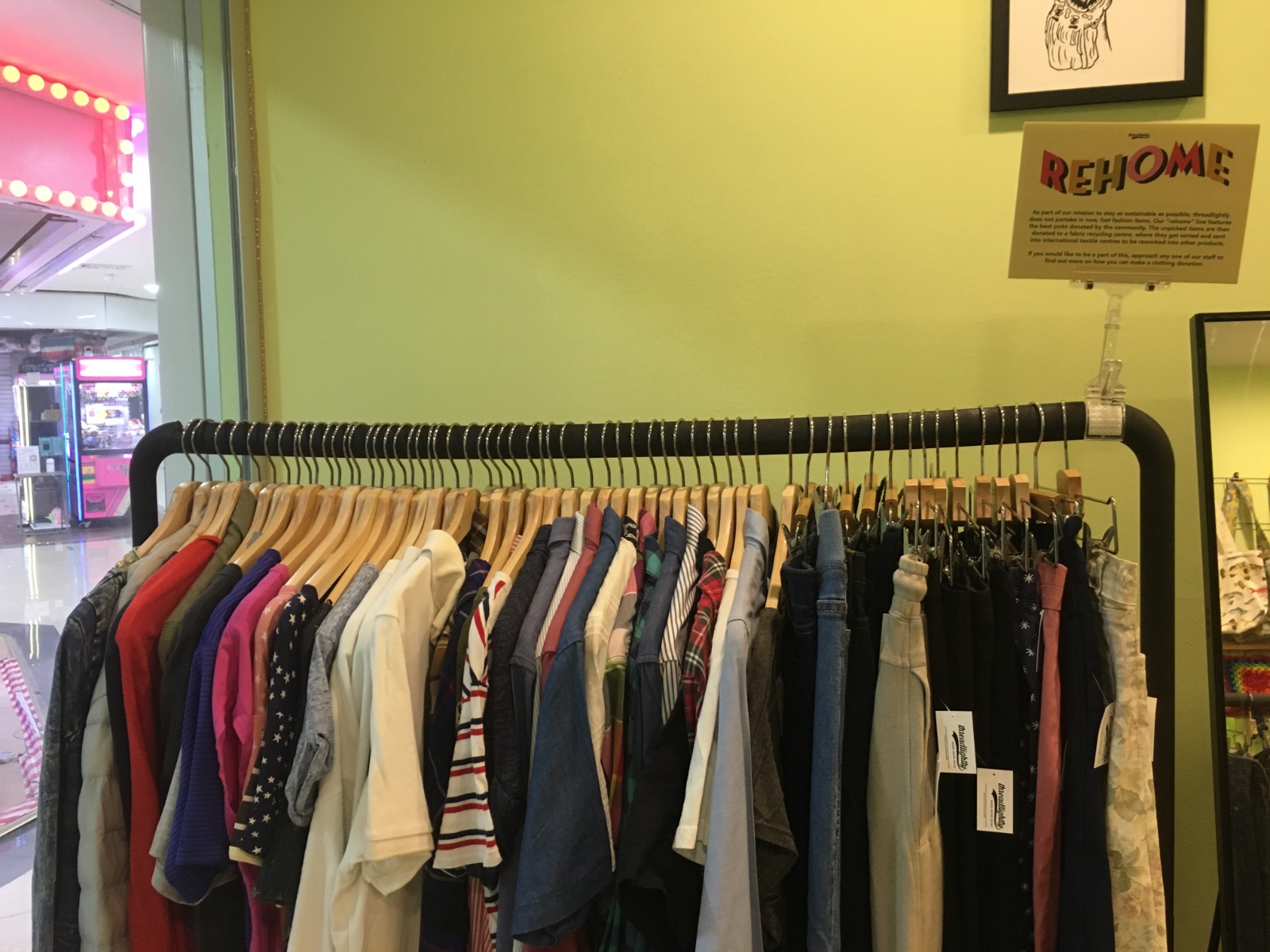 The Rehome collection. Photo by Jane Zhang.
The Rehome collection. Photo by Jane Zhang.
The Reclaim line is made up of vintage and secondhand items that have been hand-picked by Rin from overseas vintage stores and wholesalers.
It boasts a wide variety of colourful patterned collared shirts, vintage denim jackets and jeans, and dungarees.
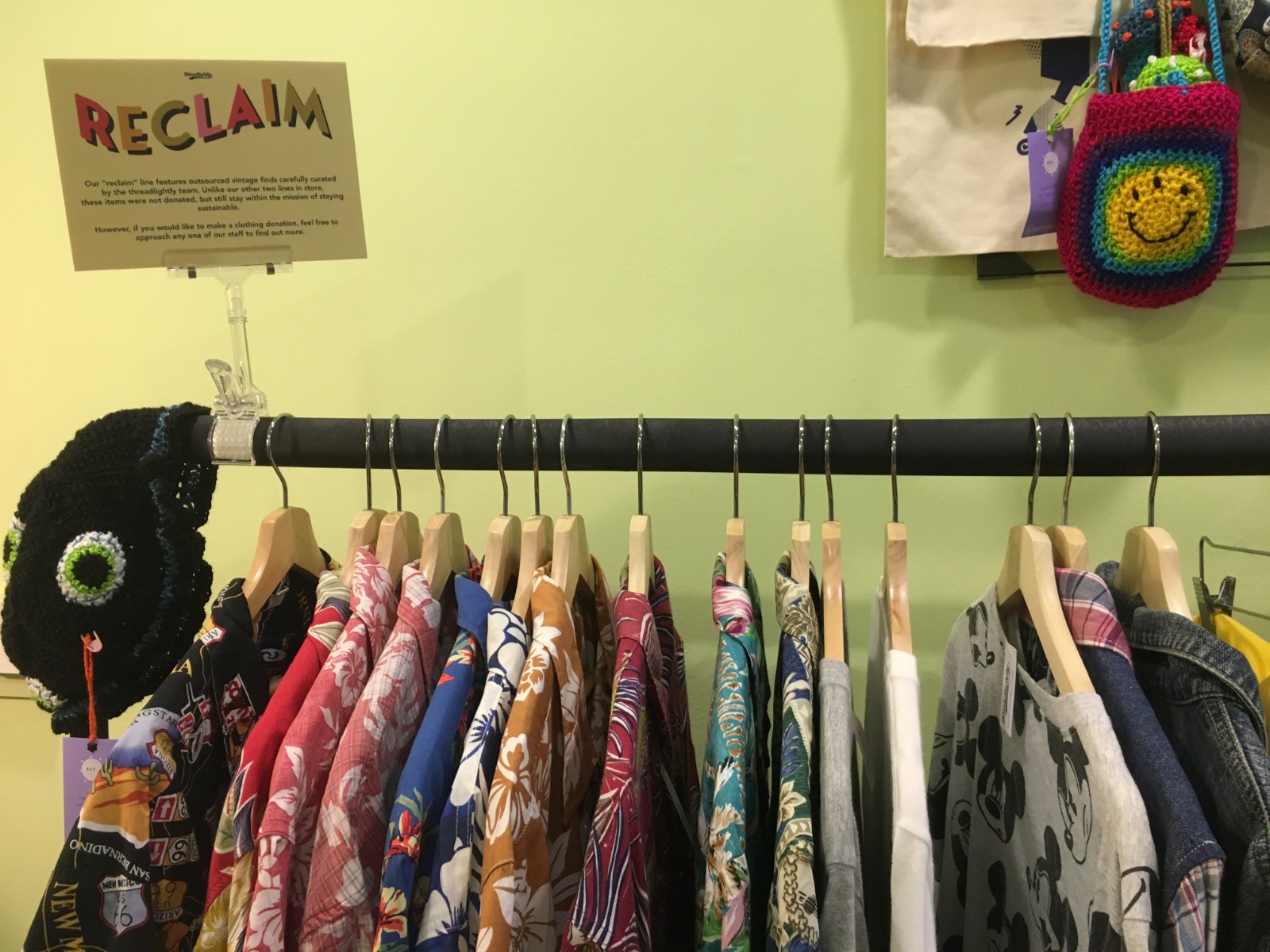 The Reclaim collection. Photo by Jane Zhang.
The Reclaim collection. Photo by Jane Zhang.
Rin explains that there's a way to tell if an item is really vintage just by looking at its threading, material, and quality.
"Most of these vintage items are of very good quality. Because stuff made in the newer age obviously are made just to produce, produce, produce, produce, so they don't use materials that are as good, I would say."
The final line — Rework — consists of clothing tie-dyed and acid-washed by Rin, as well as tote bags hand-sewn from reclaimed materials by her mother.
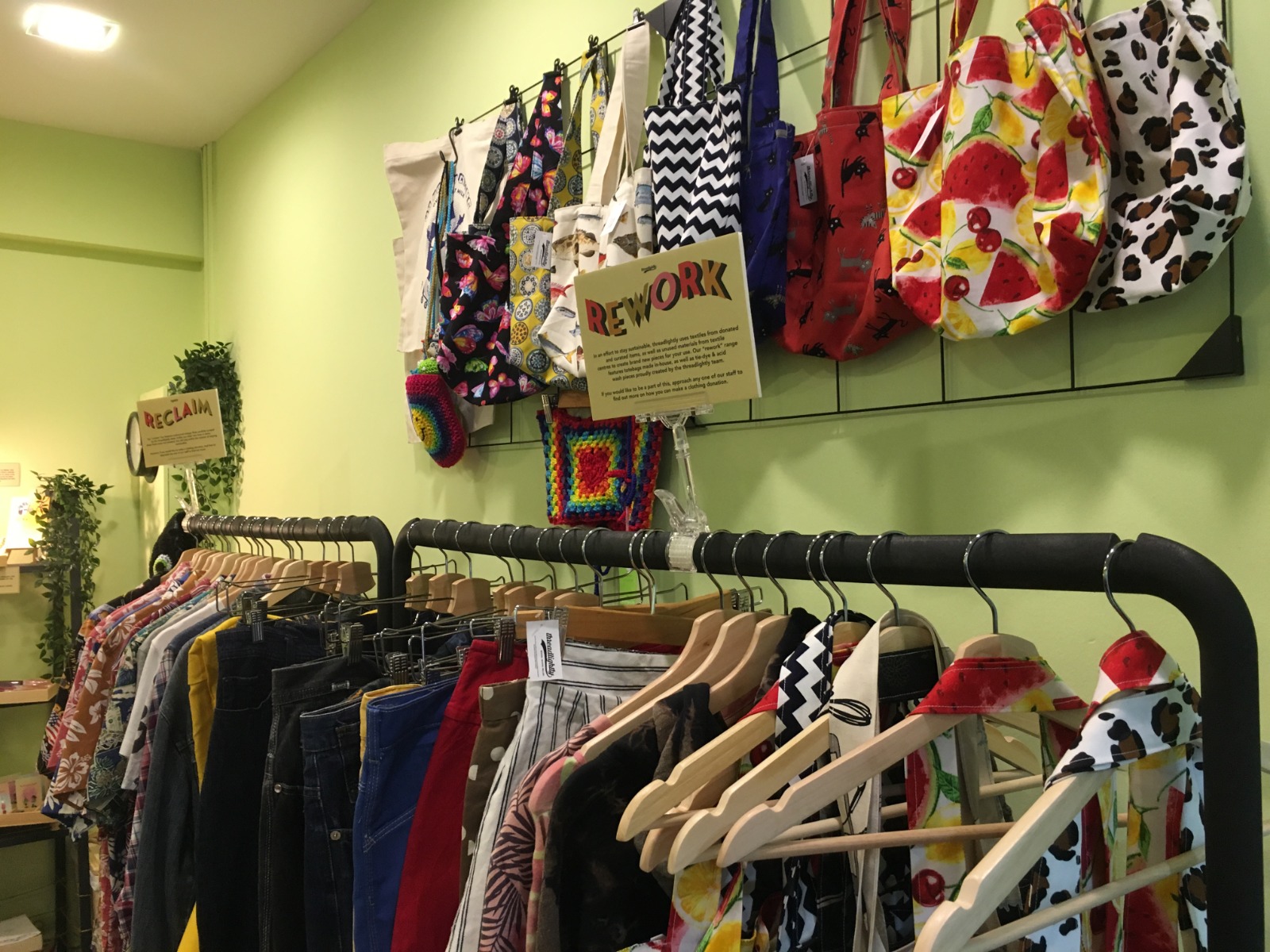 The Rework collection. Photo by Jane Zhang.
The Rework collection. Photo by Jane Zhang.
Inclusive, accessible, and community-based space
For Rin, one of the most important things about running Threadlightly is making sure that it is inclusive and accessible for everyone.
It can be seen in the way she prices her items, such that buying thrifted clothing is financially-viable for many people.
All of the clothes are priced according to which line they are in, and each line has a fixed upper limit for price.
For the Rehome line, items go for as low as S$4, and nothing costs more than S$15.
For Reclaim, vintage t-shirts tend to cost between S$30 and S$35, while jeans sell for between S$40 and S$50.
Rin also finds it important to make sure her prices are realistic for the sake of sustainability:
"I can't price it too high, because then how are people going to shop comfortably and stay within that [sustainable] mindset? Because then they might as well just buy from fast fashion."
Another way that Rin tries to make her store an inclusive space for different people is by being purposeful about making sure that they carry a wide range of sizes, to account for different body types.
Sizes throughout the store range from XS to XXL.
She tells me:
"We kind of take pride in being a lot more size inclusive, because I feel like, even when people shop in fast fashion, they can't really find sizes that, you know, go up to size 42, for example.
So we want to make sure that if they have a thrifting secondhand option, that is something that's viable for them as well."
Rin also tries to support other small local brands and artists — mostly her friends' projects — by selling their products in her store.
"We want it to be like a community-centred space, so I wanted to have a space for local brands and also local artists, to kind of put up their items."
She has one shelf dedicated toward doing just that — the "Local Corner" — where she carries curated jewelry and locally-designed tote bags by Wackywears, sustainable vegan lip gloss by Peach Glam Beauty, and sustainable jewellery by Bologna Jam.
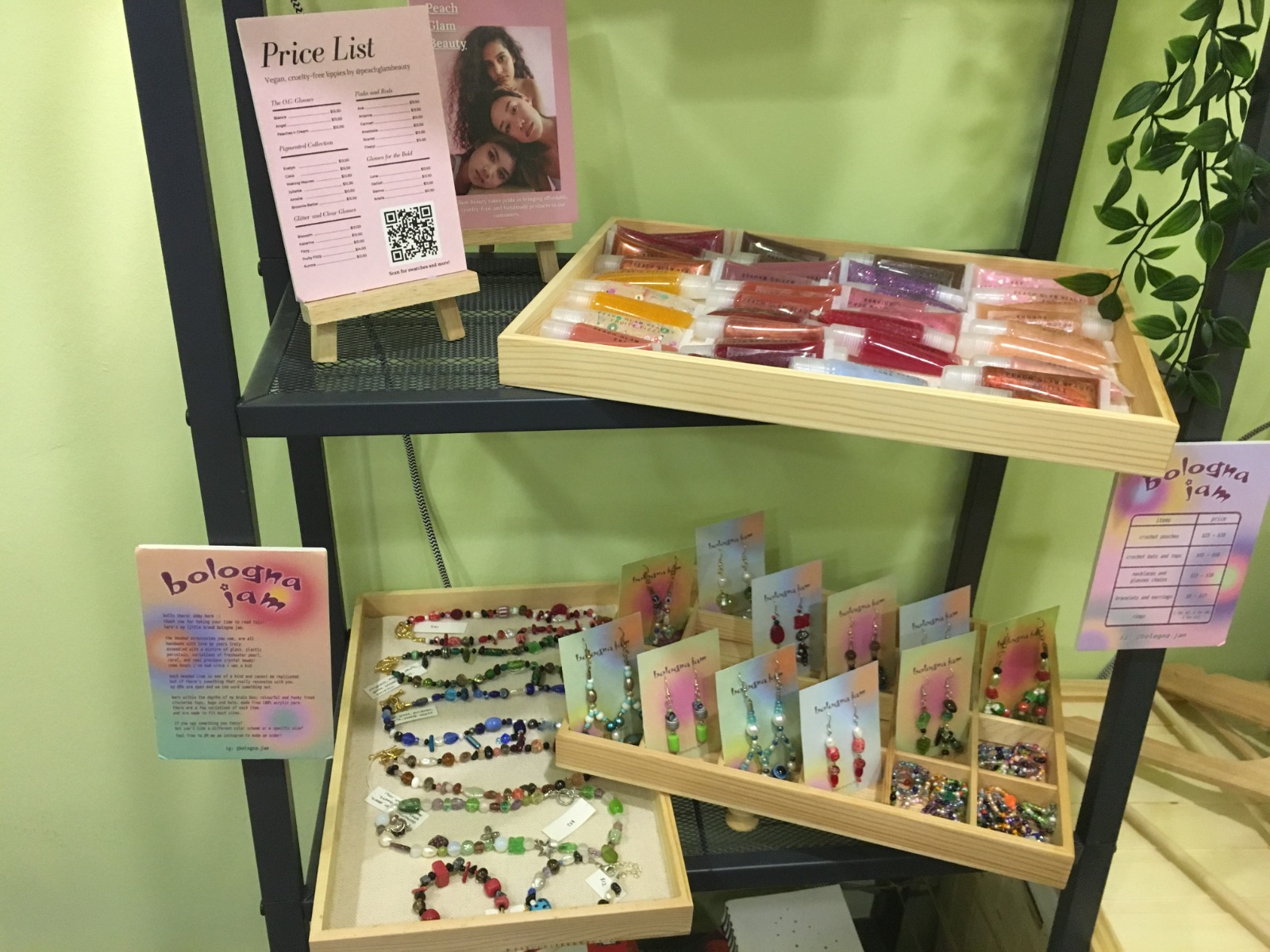 The "Local Corner" serves as a community space for local artists and businesses to sell their products. Photo by Jane Zhang.
The "Local Corner" serves as a community space for local artists and businesses to sell their products. Photo by Jane Zhang.
Another way that Rin tries to give back to the community is by donating a portion of each month's proceeds to a local organisation.
For August and September, Threadlightly donated to ItsRainingRaincoats, a local initiative that supports migrant workers.
In October and November, the organisation was Project Hills, a ground-up initiative that conducts outreach with and delivers household supplies to residents of rental housing estates.
"That's very important to me, to give back to the community. Because I think that everything in our lives are very community-based," Rin shares, adding that she is always looking for new beneficiaries.
https://www.instagram.com/p/CHWy7-snhbz/
Hopes to expand and for thrifting to become more common
As Rin and I are chatting, a group of four secondary school girls come in.
It's their first time thrifting in Singapore, and they had come across Rin's videos about Threadlightly on TikTok.
Their reason for coming was simple, one of the 14-year-olds, Faith, tells me:
"They looked like they had clothes that we'd want to buy and we'd want to wear, so we just came to check it out."
The girls explain to me that they each have quite different style preferences, and a couple of them end up finding and buying a few pieces of clothing that they like.
As the popularity of thrifting continues to grow in Singapore, especially amongst the younger generation, and with the help of social media, Rin is excited to see what the future brings.
Business has been quite good, with about 15 to 20 visitors to the store per day, with the majority of them coming after seeing videos on TikTok and social media. Some are regular mall visitors who stumble across the store as well.
For herself and her own store, Rin hopes that in the next five years, she will be able to move to a bigger store, and to make thrifting a personalised experience, by adding personal shopper or styling services.
And for the thrifting community as a whole, it looks like there's an exciting future ahead as well:
"Every day I go online on TikTok and there's somebody new who's starting a new store. So it's very very exciting. I'm very excited to see like how this all plays out."
Stories of Us is a series about ordinary people in Singapore and the unique ways they’re living their lives. Be it breaking away from conventions, pursuing an atypical passion, or the struggles they are facing, these stories remind us both of our individual uniqueness and our collective humanity.
Totally unrelated but follow and listen to our podcast here
Top photos by Jane Zhang and courtesy of Rin Azhar.
If you like what you read, follow us on Facebook, Instagram, Twitter and Telegram to get the latest updates.
